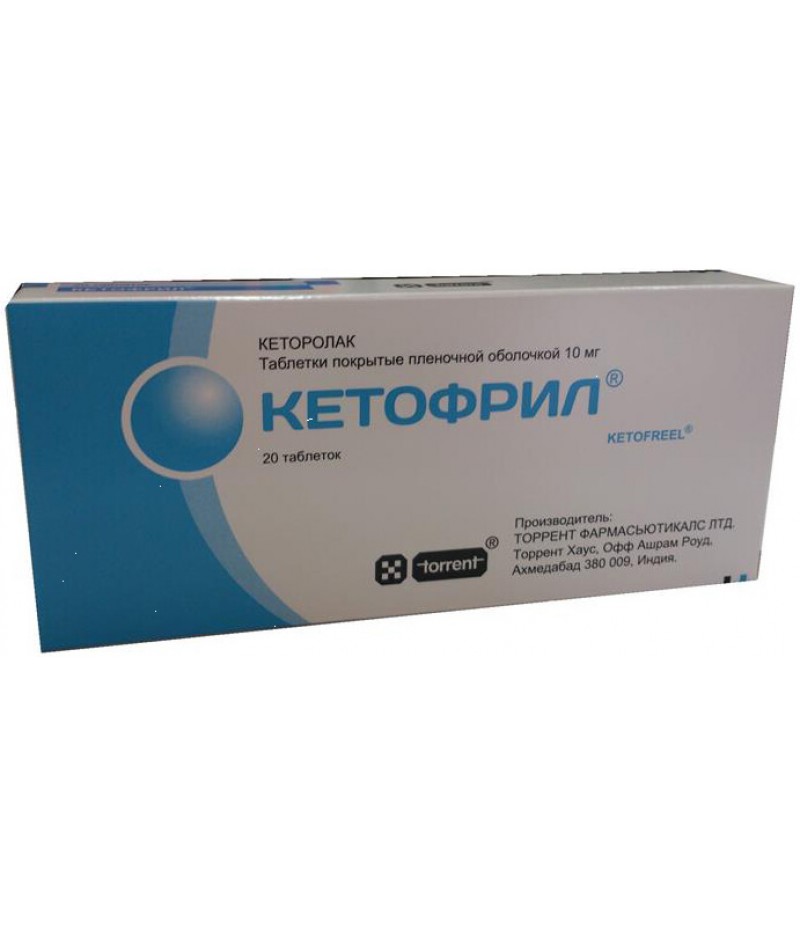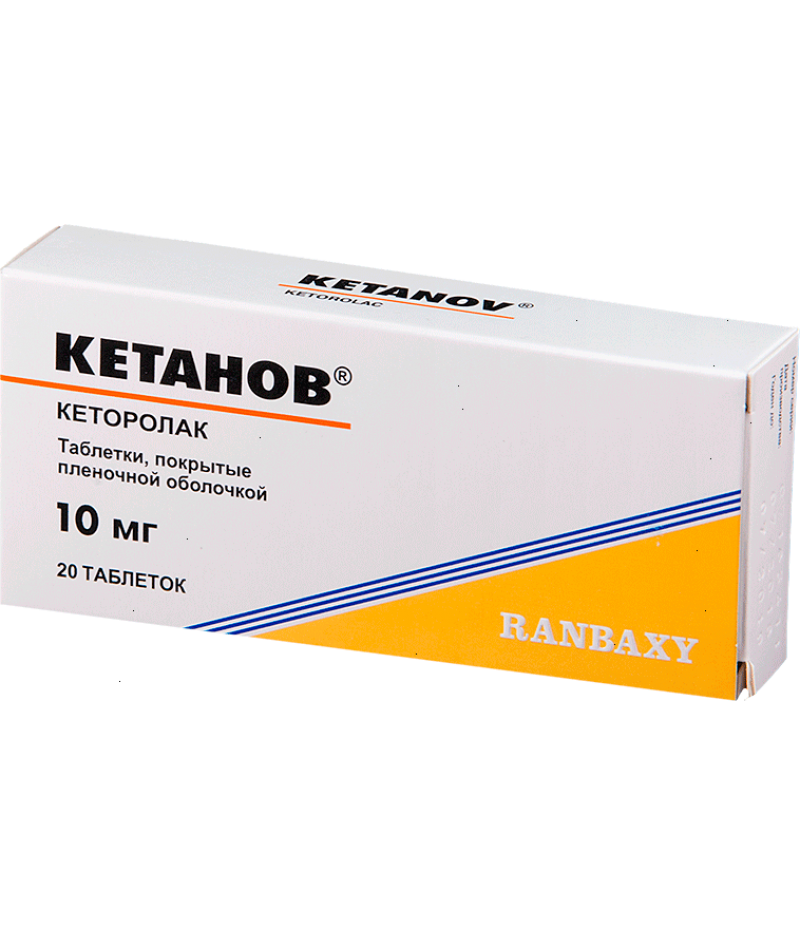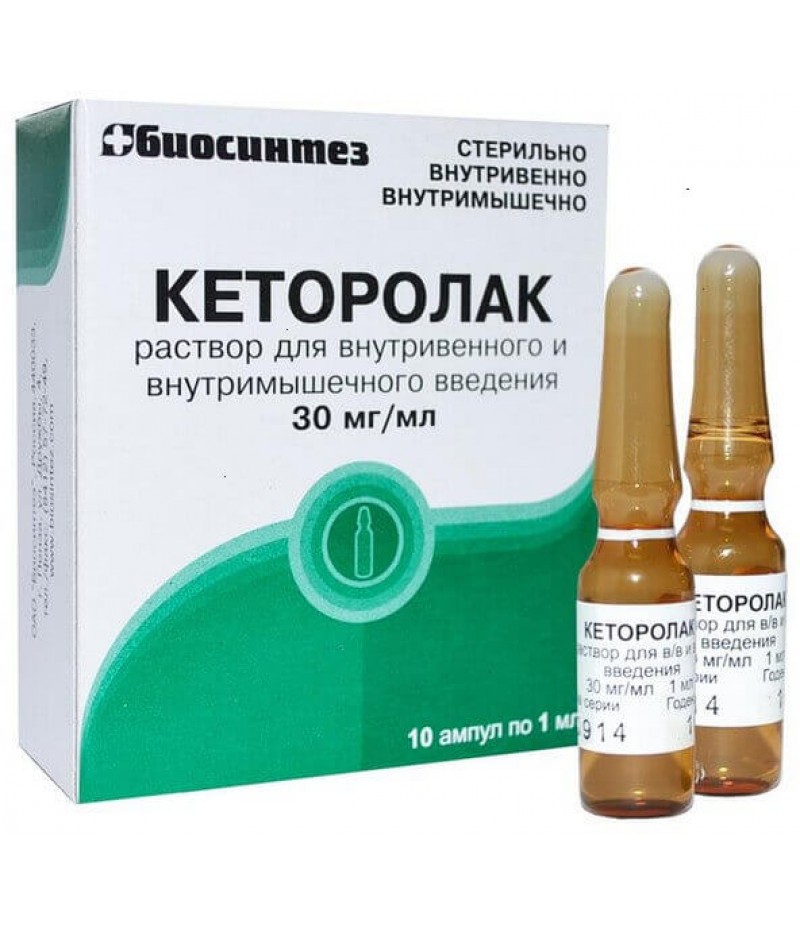Ketofril tabs 10mg #20
- $6.25
- 3 or more $5.99
- Availability:In Stock
Instruction for KetofrilReed more and buy Ketofril on this pageIndications for usePain syndrome of strong and moderate severity: trauma, toothache, pain in the postpartum and postoperative period, oncological diseases, myalgia, ar..
Tags: tabs
Instruction for Ketofril
Reed more and buy Ketofril on this page
Indications for use
Pain syndrome of strong and moderate severity: trauma, toothache, pain in the postpartum and postoperative period, oncological diseases, myalgia, arthralgia, neuralgia, sciatica, dislocations, sprains, rheumatic diseases. It is intended for symptomatic therapy, reducing pain and inflammation at the time of application, the progression of the disease is not affected.
Active substance, group:
Ketorolac, NSAIDs
Dosage form
tablets, solution for intravenous and intramuscular administration, solution for intramuscular administration, coated tablets, film-coated tablets
Contraindications
Hypersensitivity, complete or incomplete combination of bronchial asthma, recurrent nasal polyposis and paranasal sinuses and intolerance of ASA or other NSAIDs (including history), urticaria, rhinitis caused by NSAID intake (in the anamnesis); intolerance to drugs of pyrazolone series, hypovolemia (regardless of the cause that caused it), erosive and ulcerative lesions of the gastrointestinal tract in the acute stage, hypocoagulation (including hemophilia), bleeding or a high risk of their development, severe renal failure (CC less than 30 ml / min ), severe hepatic insufficiency or active liver disease, condition after CABG, confirmed hyperkalemia, pregnancy (III trimester), inflammatory bowel disease, labor, lactation, children under 16 (safety and ef have not been established).
Dosing and Administration (Instruction)
In / m, in / in and inside. For IV administration, the dose should be administered at least 15 s (for dosage forms containing ethanol).
When administered orally to patients aged 16 to 64 years with a body weight exceeding 50 kg, the recommended dose is 20 mg for the first time, then 10 mg 4 times a day, but not more than 40 mg / day.
Adult patients with a body weight of less than 50 kg or with kidney failure - 10 mg in the first dose and then 10 mg 4 times a day.
The maximum daily dose of Ketofril for oral administration is 40 mg.
For parenteral administration to patients aged 16 to 64 years with a body weight exceeding 50 kg, IM / injection for 1 administration is not more than 60 mg (including oral dose); usually 30 mg every 6 hours; in / in - 30 mg (not more than 15 doses for 5 days). In / m adults with a body weight of less than 50 kg or with CRF for 1 administration is administered no more than 30 mg (including oral dose); usually - 15 mg (no more than 20 doses per 5 days); in / in - no more than 15 mg every 6 hours (no more than 20 doses in 5 days).
The maximum daily doses for IM and IV administration are for patients from 16 to 64 years with a body weight exceeding 50 kg, 90 mg / day; adult patients with a body weight of less than 50 kg or with CRF, as well as elderly patients (over 65 years of age) for intravenous and / or 60 mg injections. The duration of treatment should not exceed 5 days.
Pharmachologic effect of Ketofril
NSAIDs have a pronounced analgesic effect, it also has an anti-inflammatory and moderate antipyretic effect. The mechanism of action is associated with nonselective inhibition of the activity of COX1 and COX2, which catalyzes the formation of Pg from arachidonic acid, which play an important role in the pathogenesis of pain, inflammation and fever. By the strength of the analgesic effect comparable to morphine, it significantly exceeds other NSAIDs.
After intravenous administration and oral administration, the onset of analgesic effect is observed respectively in 0.5 and 1 hour, the maximum effect is achieved after 1-2 hours and 2-3 hours.
Side effects
Often - more than 3%, less often - 1-3%, rarely - less than 1%.
From the digestive system: often - gastralgia, diarrhea; less often - stomatitis, flatulence, constipation, vomiting, sensation of stomach overflow; rarely - decreased appetite, nausea, erosive and ulcerative lesions of the digestive tract (including with perforation and / or bleeding - abdominal pain, spasm or burning in the epigastric region, blood in the feces or melena, vomiting with blood or the type of "coffee thick, "nausea, heartburn, etc.), cholestatic jaundice, hepatitis, hepatomegaly, acute pancreatitis.
From the side of the urinary system: rarely - acute renal failure, back pain, hematuria, azotemia, hemolytic uremic syndrome (hemolytic anemia, renal failure, thrombocytopenia, purpura), frequent urination, increase or decrease in urine volume, nephritis, edema of renal genesis.
From the senses: rarely - hearing loss, ringing in the ears, visual impairment (including blurred vision).
On the part of the respiratory system: rarely - bronchospasm or dyspnoea, rhinitis, pulmonary edema, laryngeal edema (shortness of breath, difficulty breathing).
From the side of the central nervous system: often - headache, dizziness, drowsiness; rarely - aseptic meningitis (fever, severe headache, seizures, neck and / or neck stiffness), hyperactivity (mood changes, anxiety), hallucinations, depression, psychosis, fainting.
On the part of the CAS: less often - an increase in blood pressure.
From the hemopoiesis: rarely - anemia, eosinophilia, leukopenia.
From the side of the hemostasis system: rarely - bleeding from a postoperative wound, nosebleeds, rectal bleeding.
On the part of the skin: less often - skin rash (including maculopapular rash), purpura, rarely - exfoliative dermatitis (fever with chills or without, hyperemia, densification or flaking of the skin, enlargement and / or soreness of palatine tonsils), urticaria, malignant exudative erythema (Stevens-Johnson syndrome), toxic epidermal necrolysis (Lyell's syndrome).
Local reactions: less often - burning or pain at the injection site.
Allergic reactions: rarely anaphylaxis or anaphylactoid reactions (skin discoloration, skin rash, urticaria, skin itching, tachypnea or shortness of breath, swelling of the eyelids, periorbital edema, shortness of breath, shortness of breath, chest pain, wheezing).
Other: often - swelling (face, legs, ankles, fingers, feet, weight gain); less often - increased sweating, rarely - swelling of the tongue, fever.
Special instructions for Ketofril
Before prescribing the drug, it is necessary to clarify the question of the previous allergy to the drug or NSAIDs. Because of the risk of developing allergic reactions, the first dose is administered under close supervision of the doctor.
Hypovolemia increases the risk of developing nephrotoxic adverse reactions.
If necessary, can be used in combination with narcotic analgesics.
It is not recommended to be used Ketofril as a medicine for premedication, maintenance of anesthesia.
When combined with other NSAIDs, fluid retention, cardiac decompensation, and increased blood pressure may occur. The effect on platelet aggregation stops after 24-48 hours. Do not apply simultaneously with paracetamol for more than 5 days.
Patients with blood clotting disorder are appointed only with a constant control of the number of platelets, it is especially important for postoperative patients requiring careful control of hemostasis.
The risk of developing drug complications increases with prolonged treatment (in patients with chronic pain) and an increase in the oral dose of the drug more than 40 mg / day.
To reduce the risk of NSAID-gastropathy, antacid drugs, misoprostol, omeprazole are prescribed.
During the treatment period, care must be taken when driving vehicles and engaging in other potentially dangerous activities that require an increased concentration of attention and speed of psychomotor reactions. To reduce the risk of developing adverse events on the part of the gastrointestinal tract, a minimum effective dose should be used with the minimum possible short course.
Interaction
Simultaneous use Ketofril with paracetamol increases the nephrotoxicity of ketorolac.
The use of other NSAIDs, GCS, ethanol, corticotropin, Ca2 + drugs increases the risk of ulceration of the gastrointestinal mucosa and the development of gastrointestinal bleeding.
Simultaneous application with indirect anticoagulants - derivatives of coumarin and indandion, heparin, thrombolytic agents (alteplase, streptokinase, urokinase), antiaggregants, cephalosporins, valproic acid and ASA increases the risk of bleeding.
Reduces the effect of hypotensive and diuretic drugs (reduces the synthesis of Pg in the kidneys).
Simultaneous use with methotrexate increases hepato- and nephrotoxicity (their joint use is possible only with the use of low doses of the latter and control of its concentration in the plasma).
When used with other nephrotoxic drugs (including drugs with Au), the risk of developing nephrotoxicity increases.
LS, which block tubular secretion, reduce the clearance of ketorolac and increase its concentration in the plasma.
Increases the effect of narcotic analgesics.
Myelotoxic drugs increase the manifestation of hematotoxicity of the drug.
Terms of sell
To buy Ketofril you don't need a prescription.



